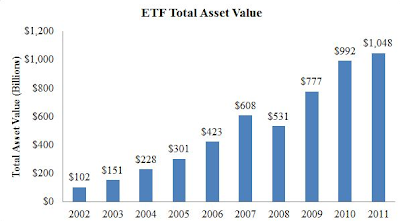
Our experts frequently write blog posts about the findings of the research we are conducting.
SLCG Research: Non-Traded REITs
WSJ on Innovation in Commodity ETFs
Some of these new products use complex formulas to identify commodities...
Time to Call for More Transparency in ETF Market
Mutual Fund Expense Analyzer: A Tool for Calculating Mutual Fund Fees and Expenses
What is a Synthetic ETF?
Should You Cash Out Your Home Equity to Find Your Missed Fortune? Careful! A Scam Might Be On the Way
ETFs' Asset Value is Increasing, Trading Volume Remains Stable

Reserve your Clever ETF Ticker Before it's Too Late
But finding a catchy symbol can be tough these days. Many have already been taken: 1,350 symbols are in use on the NYSE Arca alone, the biggest U.S. market for exchange-traded products. That's up 108% over the past five years, says Ms. Morrison. In addition, fund firms have reserved 2,446 symbols for future...
Dealbreaker on the Hayes award and LCM VII CLO
A Wipeout That Didn't Have to Happen